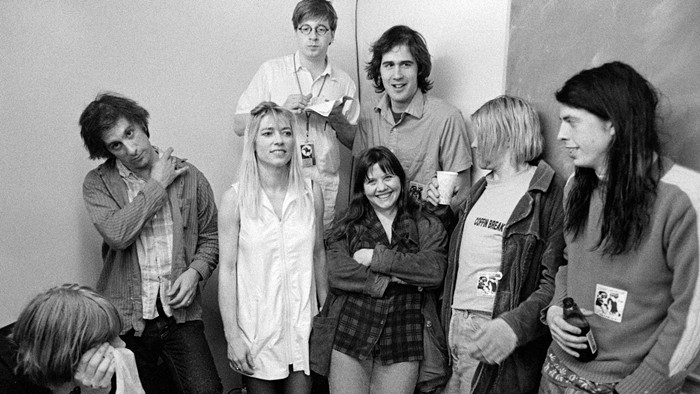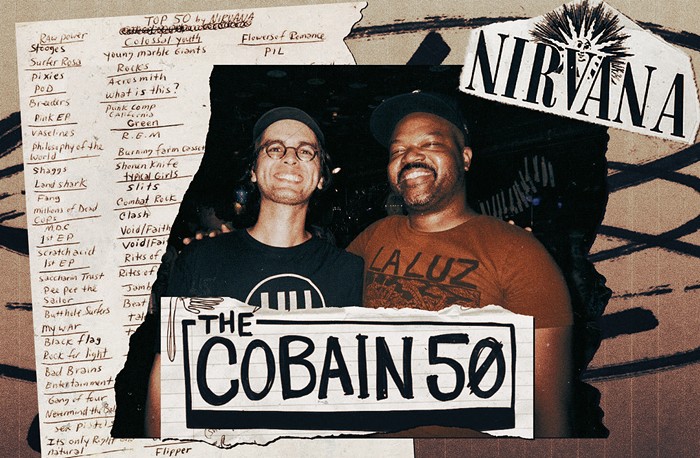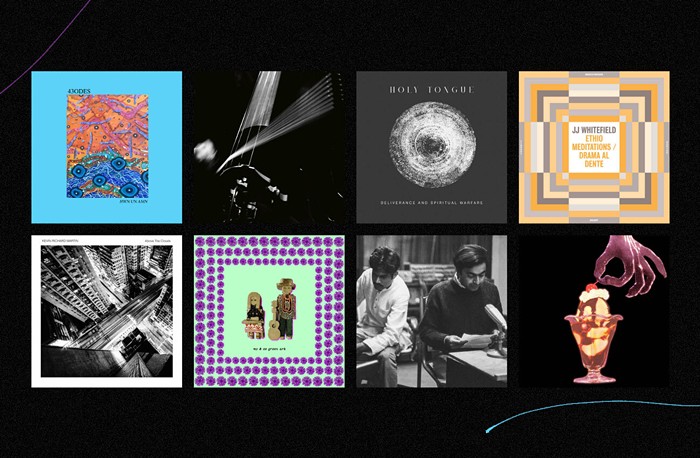
2014 Stranger Genius contender/solo artist/Shabazz Palaces producer Erik Blood has been very busy lately. He just finished producing a Tacocat album and is starting on a Stickers’ full-length on Friday. Work on new Shabazz Palaces tracks is an ongoing project, with no foreseeable end. And he also recently completed his next solo album, Lost in Slow Motion, which has no release date or label yet. Blood’s been shopping it and if he finds no home for it, he will self release it in the spring of 2016.
An initial listen reveals it to be a gorgeous nocturnal record, maneuvering in the seldom-explored zone between soul and shoegaze rock. It’s both intimate and epic, a swirling miasma of heartbreak and inspiration. Blood proves himself to be a primal romantic who nonetheless prefers to swathe his emotions in layers of luscious instrumentation. You have to pay extra close attention to get to the core of his sound, but the payoff is immensely worth it. Let's hope some label realizes this and gets it out sooner rather than later.
Lost in Slow Motion track list
01 (when they are loving) featuring Palaceer Lazaro
02 The Attic System
03 Chase the Clouds (lyrics by Blood and Irene Barber)
04 Bloused Up (featuring Paul Gonzenbach and Corey Gutch on lead guitar)
05 Covered in a Color
06 Quiet
07 Remove Control
08 Hold for Laughs
09 Ostrich
10 Out This Way (featuring OCnotes)
Of further interest to Blood fans, the September/October issue of Tape Op has an excellent, in-depth interview with him Shabazz Palaces’ Ishmael Butler. (A small portion of it is online, but you have to subscribe to read it all; it's free. You can also pick up a free physical copy of the mag at Wall of Sound and probably some other record stores. It’s worth the extra effort.) Conducted by Geoff Stanfield at Black Space Labs in Seattle, the piece covers topics like Shabazz Palaces’ origins, how Butler and Blood both started their audio obsessions at age 13 with cassette recorders, their working methods/creative process, their studio gear, analog versus digital recording (never gets old), the importance of the color blue, and more. Because it’s Tape Op, the focus is on recording techniques and equipment, but even if you’re not an audio engineer or a musician, the article’s a fascinating look at the city’s—if not the country’s—most interesting and innovative hiphop group.
Here’s a noteworthy passage:
Tape Op: You guys have done an amzing job of taking technology out of its basic form and pushing the envelope with it.
Ishmael Butler: You can’t rely on the technology to do anything musical for you. You can’t rely on the guitar, just because it’s a [Les Paul] Goldtop, to sound like something. You’ve got to do that shit. If you think you can just dump something in there, time stretch it, and be done, then you’ve collaborated with the program to make a song, and I don’t think you should do that…. You’ve got to have an idea, but you’ve got to have some passion. If you don’t have passion, it’s going to become readily apparent in the first couple of seconds of whatever you do. I think that musicians travel on vibration. From a young age, you hear vibrations in things and it makes you feel different. That’s why you can have a similar sonic palette to some cats even when you’ve never heard their music. Everybody’s vibing and somebody will say, “Hey, look at this Big Muff pedal.” The cats that are vibing are like, “Man, let me hear that again!” Everybody wants to use it and get their hands on it, because they’ve got an idea with it.



















